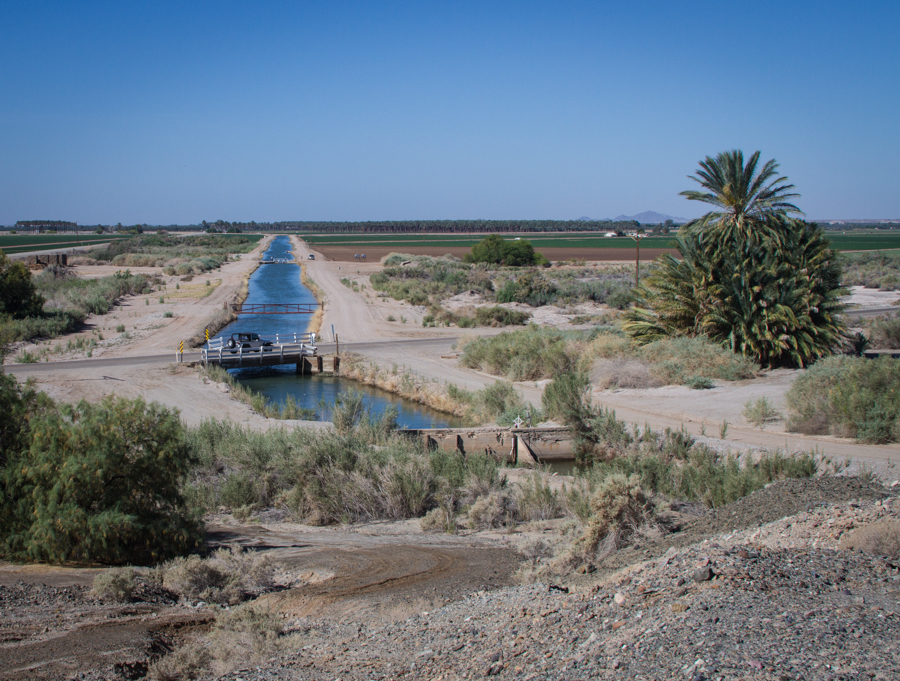I spent much of today in Bard, which is one of the oldest western U.S. irrigation projects of the modern era. It’s modest – about 15,000 irrigated acres, roughly half on the Quechan Indian reservation and half non-Indian land, on the California side, just across the Colorado River from Yuma.
Medjool dates are a thing here, as are blood oranges (one of which I am eating as I write this, trying not to get sticky citrus juice on the keyboard of my laptop). But the real action is winter produce – lettuce, broccoli and the like. Good money in providing us with winter produce. Come spring, the acres that in winter are filling our salad bowls are mostly shifted to cover crops to feed cattle, such as sundangrass sudangrass, or to wheat. They can do all this in the driest desert in the United States thanks to a system of dams and canals that delivers a reliable water supply even in the most serious drought. By virtue of first putting the water of the Colorado River to beneficial use, the farmers of Bard and their neighbors across the river in Yuma have some of the most senior, most reliable water rights in the western United States.
Even in drought, the “Reservation Canal”, as the big ditch in the picture is known, runs full.


Isn’t that “sudangrass”? http://cals.arizona.edu/fps/sites/cals.arizona.edu.fps/files/cotw/Sudan_Grass.pdf
Oops, thanks for catching the typo!